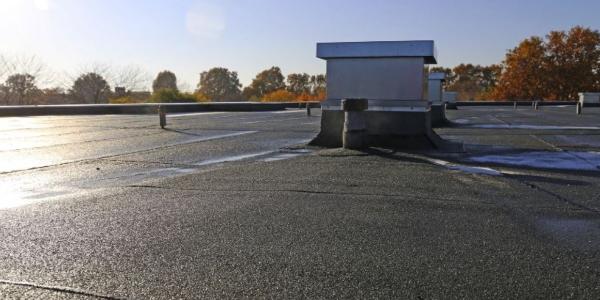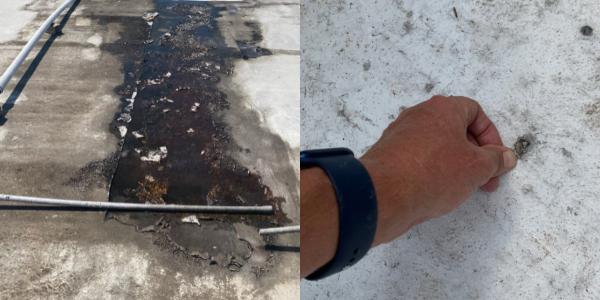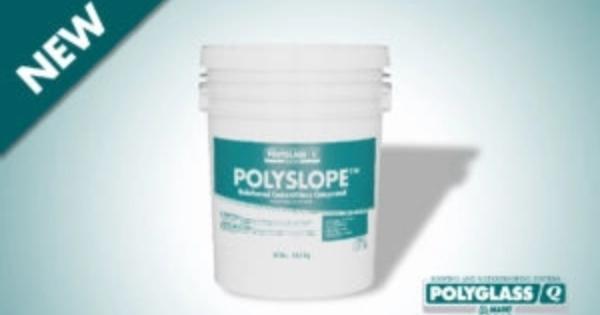Mastering flat roof drainage
January 11, 2025 at 6:00 a.m.By Showalter Roofing.
Prevent water damage and protect your building with expert flat roof solutions.
Flat roofs may look sleek and modern, but without proper drainage, they’re a disaster waiting to happen. A small misstep in design or maintenance can lead to standing water, structural damage and costly repairs. That’s why Showalter Roofing values precision, planning and expertise in every flat roof project. So, how do you ensure your flat roof keeps water where it belongs — off your building? The answer lies in understanding the science of slope and trusting professionals to protect your investment. Below, uncover the essential steps to creating a drainage system that stands the test of time.
What is a flat roof?
Contrary to what the name suggests, a flat roof isn’t completely level. A properly installed flat roof includes a subtle pitch — typically 1/4 inch per foot — to facilitate efficient drainage. This subtle incline might not be obvious, but it’s crucial for diverting water toward your drainage points. Flat roofing systems are especially common in commercial buildings seeking to maximize their space.
Benefits of a flat roof
A properly installed flat roof offers various key advantages such as:
Space utilization
One of the biggest advantages of a flat roof is the extra usable space it provides. Your roof can be used for:
- HVAC system placement
- Solar panel installation
- Rooftop gardens or green spaces
- Additional outdoor areas
- Equipment storage
Cost-effective installation and maintenance
Lower installation costs: The simplified design requires fewer materials and less labor to install. The straightforward structure means faster completion times, which helps keep initial costs down.
Easier maintenance access: The level surface makes it simpler and safer for professionals to:
- Perform regular inspections
- Clean drainage systems
- Make repairs when needed
- Install or maintain equipment
- Access all areas of the roof easily
How to determine the right pitch for your roof
The slight slope of your roof, also called pitch, ensures water drains effectively. Here are some factors to consider when selecting the right pitch for your roof:
Climate considerations
Your local weather patterns play a big role in determining the optimal slope. Areas with heavy rainfall or frequent storms might need a steeper slope to handle higher water accumulation.
Roof configuration
The size and shape of your roof help determine where to direct water. It’s important to look at the entire roof surface to plan the most effective drainage paths and determine necessary drainage points.
Structural considerations
Before adding any materials, you’ll need to make sure your building’s structure can handle the additional weight. This analysis will determine the best method to construct a stable slope that won’t collapse.
How to create the proper slope for roof drainage
There are several proven methods for creating effective drainage slopes:
Tapered insulation system
This is the most common approach for creating a roof slope. Professionals use specialized insulation boards that gradually increase in thickness, creating a consistent slope toward your drainage points. This method is efficient and provides additional insulation benefits.
Built-up solution
Some roofs benefit from a built-up approach where materials are carefully layered to create the necessary slope. This method addresses specific drainage challenges while ensuring proper waterproofing.
Water diversion features
Crickets are raised triangular structures that guide water around these obstacles and toward drainage points. Often installed around roof obstacles like HVAC units, they prevent water from collecting behind equipment.
The professional installation process
For best results, you should have professionals install your flat roof drainage system. At Showalter Roofing, our process looks like this:
- Surface preparation: We start with a thorough cleaning and inspection of your existing roof surface, repairing any damage we find.
- Drainage installation: We install high-quality drains in strategic low spots, connecting them to your building’s existing drain pipes.
- Slope creation: Whether we use tapered insulation or a built-up system, we make sure your roof has clear paths for water to drain.
- Waterproof coverage: We finish with a strong waterproof barrier that protects your entire roof system.
Original article and photo source: Showalter Roofing
Have a question? AskARoofer.
Find your local roofing contractor in the RoofersCoffeeShop® Contractor Directory.











Comments
Leave a Reply
Have an account? Login to leave a comment!
Sign In